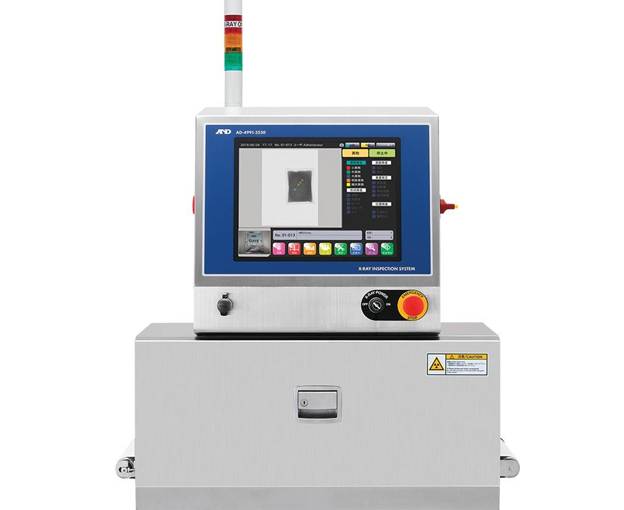Food safety is an important concern for consumers, businesses, and regulatory authorities alike. The quality and safety of food products not only impact public health but also influence consumer trust, brand reputation, and industry compliance.
Understanding Food Safety Inspection Systems
A food safety inspection system comprises a set of processes, protocols, and regulations designed to monitor, evaluate, and regulate food production, handling, storage, and distribution. These systems are implemented by government agencies, food industry organizations, and certification bodies to enforce food safety standards, identify potential hazards, and mitigate risks associated with foodborne illnesses.
Key Components of Food Safety Inspection Systems:
Regulatory Standards: Food safety inspection systems adhere to national and international standards and regulations established by government agencies (e.g., FDA in the United States, EFSA in Europe) and international bodies (e.g., Codex Alimentarius). These standards cover various aspects of food safety, including hygiene practices, sanitation, temperature control, labeling, packaging, and allergen management.
Risk Assessment: Inspection systems conduct risk assessments to identify potential hazards in food production and processing. This includes biological hazards (e.g., pathogens like Salmonella and E. coli), chemical hazards (e.g., pesticides, additives, contaminants), and physical hazards (e.g., foreign objects, allergens).
Inspection Procedures: Food safety inspections involve on-site visits, audits, and assessments of food facilities, processing plants, farms, restaurants, and retail establishments. Inspectors evaluate hygiene practices, cleanliness, storage conditions, pest control measures, equipment maintenance, and employee training to ensure compliance with food safety standards.
Sampling and Testing: Inspection systems collect samples of food products, ingredients, water, and environmental surfaces for laboratory testing. Microbiological, chemical, and sensory analyses are conducted to detect contaminants, pathogens, spoilage, and adulteration. Test results help assess food safety risks and determine the suitability of products for consumption.
Traceability and Recall Systems: Food safety inspection systems emphasize traceability and recall capabilities to track food products throughout the supply chain. Batch codes, labeling, barcoding, and electronic systems enable rapid identification, isolation, and recall of potentially unsafe products in case of contamination or safety incidents.
The Significance of Food Safety Inspection Systems
1. Protecting Public Health:
The primary goal of food safety inspection systems is to safeguard public health by preventing foodborne illnesses and outbreaks. Inspections identify and control hazards that can cause food contamination, spoilage, and microbial growth. By enforcing hygiene practices, sanitation standards, and quality controls, these systems reduce the risk of foodborne pathogens, toxins, and allergens in the food supply.
2. Ensuring Compliance and Standards:
Food inspection systems ensure compliance with regulatory standards, industry guidelines, and best practices in food production and handling. Compliance inspections verify that food businesses adhere to legal requirements, licensing conditions, and food safety management systems. Adhering to standards promotes consistency, transparency, and accountability in the food industry.
3. Building Consumer Confidence:
A robust food safety inspection system enhances consumer confidence in the safety and quality of food products. Transparent labelling, certification marks, and adherence to food safety protocols reassure consumers about the safety, authenticity, and nutritional value of the foods they purchase. Trustworthy food brands and businesses prioritize food safety as a fundamental aspect of their operations.
4. Preventing Economic Losses:
Foodborne illnesses, recalls, and safety incidents can result in significant economic losses for businesses, suppliers, and the food industry as a whole. Food safety inspection systems help prevent costly recalls, litigation, reputation damage, and market disruptions caused by contaminated or unsafe food products. Proactive risk management and compliance reduce financial risks and protect business sustainability.
5. Supporting International Trade:
Harmonized food safety standards and inspection systems facilitate international trade and commerce in food products. Countries and regions that adopt consistent standards and mutual recognition agreements ensure the safety and quality of imported and exported foods. Compliance with global food safety requirements promotes market access, competitiveness, and trade relationships.
Challenges and Innovations in Food Safety Inspection
While food inspection systems play a crucial role in protecting public health and ensuring food quality, they also face challenges and opportunities for innovation:
Complex Supply Chains: Globalization, supply chain complexity, and cross-border trade present challenges in monitoring food safety throughout the supply chain. Traceability technologies and data analytics solutions improve transparency, traceability, and real-time monitoring of food products.
Emerging Risks: New foodborne pathogens, contaminants, and food fraud incidents require proactive risk assessment and detection methods. Rapid testing technologies, molecular diagnostics, and predictive analytics enhance early detection, risk prediction, and mitigation strategies.
Digital Transformation: Digitalization, automation, and AI-driven solutions are transforming food safety inspections. Electronic recordkeeping, remote inspections, smart sensors, and IoT devices streamline inspection processes, data collection, and compliance management.
Training and Education: Continuous training, education, and capacity-building efforts are essential for food safety inspectors, auditors, and industry professionals. Training programs focus on risk awareness, best practices, technological advancements, and regulatory updates to ensure effective food safety management.
Collaboration and Information Sharing: Collaboration among government agencies, industry stakeholders, research institutions, and consumer advocacy groups strengthens food safety systems. Information sharing platforms, public-private partnerships, and industry forums facilitate knowledge exchange, best practice dissemination, and crisis response coordination.
Also Read: Tips to Consider Before Purchasing X-Ray Inspection Systems
Conclusion: Advancing Food Safety Through Inspection Systems
Food safety inspection systems play a pivotal role in safeguarding public health, ensuring compliance with standards, and building consumer trust in the food supply. These systems employ risk-based approaches, technology-driven solutions, and collaborative efforts to address evolving challenges, emerging risks, and global food safety concerns.
By embracing innovation, transparency, and continuous improvement, food safety inspection systems contribute to a safer, healthier, and more resilient food system for consumers, businesses, and regulatory authorities worldwide.

